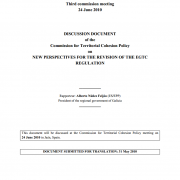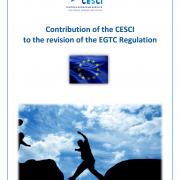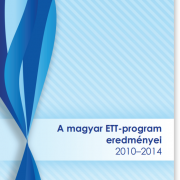Posts
Glosses on the Ister–Granum EGTC research
This article outlines the geographical framework of the results of our research in this collection of studies. It consists of three main parts. The first part discusses the history of scientific studies conducted in relation to the Ister-Granum EGTC that evolved from a Euroregion after the turn of the millennium. Its focus is the physical and social geographical characteristics of the EGTC area as well as its historical and administrative changes. The second part is essentially of a complementary nature concentrating on the historical dimension by presenting the paths which can be obtained from the historic-statistical data for the population of settlements. It covers the changes in the region’s historical geographical situation over a period from the mid-19th century to the present. The third and final part is a compilation on the history of the EGTC from its first attempts of cooperation when Esztergom and Štúrovo (Párkány) became twin towns, through the present operation procedures to its project-generating activities. Thus, this article establishes the points of contact and spatial allocations for the subsequent studies.
An analysis of the external and internal legal regulations governing the EGTC
On the 26th May 2010, the Steering Committee of the CETC consortium in its meeting in Varaždin (Croatia) approved a letter of intent to establish a European Grouping of Territorial Cooperation (EGTC).
It is expected that this new organization will intensify the cooperation, provide Europe wide publicity for the initiative, make the common work more effective and successful, and by creating common institutions it will lay down the basis for a long term spatial development programme.
The Technical Secretariat of the consortium has charged the Central European Service for Cross-Border Initiatives (CESCI) with the preparation works of the EGTC. For the first step CESCI has elaborated an analysis of the external and internal legal, organizational and financial conditions of the establishment procedure.
This document contains 3 chapters. In the first chapter (reasoning), we analyse the circumstances in which the CETC consortium, or more precisely its members made the decision to create an EGTC.
In the second we summarize the most important information regarding the EGTC regulation (what it can be used for).
Finally, in the 3rd chapter we provide a proposal concerning the establishment of the EGTC (how to launch it). This part of the work deals with legal, financial, structural and operational questions.
The aim of the document is to facilitate a well-founded decision.
Contribution of the CESCI to the revision of the EGTC Regulation
The study related to the revision of the EGTC Regulation was carried out in the framework of a consultation launched by Alberto Núñez Feijóo, President of the Regional Government of Galicia. It consists of two parts: in the first one, it analyses the theoritical framework of the EGTC as a new cooperation instrument and in the second part, it gives a detailed opinion on the EU EGTC Regulation, creating proposals for modifications.
The foundation of the Central European Transport Corridor EGTC
For the establishment of the Central European Transport Corridor EGTC, CESCI created a study that gives a base, and elaborated the draft statute and convention. The Western Pomeranian Vojvodina has given our association a commission for the preparation of the study, “An analysis of the external and internal legal regulations governing the EGTC”. The task was to analyze whether it is worth setting up an EGTC in the case of the consortium, which is uniting six countries and was created for the establishment of the Central European Transport Corridor: CETC. And if yes, how should the EGTC should be established. Our association investigated the relating legal environment of the six countries and made a proposal in relation to the establishment and to the organisational structure. After this we also elaborated a draft statute and convention for the EGTC with a Polish seat.
Snapshot of EGTC’s with Hungarian participation
Since the entry into force of the EC Regulation No. 1082/2006/EC (1st August 2007) altogether 29 EGTC’s have been registered in the European Union. Out of them 10 with Hungarian registered seat and 2 with Slovakian ones with Hungarian participation. It is no coincidence that in relation to the experiences connected to the establishment and operation of EGTC’s the attention paid to the Hungarian groupings has significantly increased.
In the followings we try to provide a brief analysis of the 10 EGTC’s with Hungarian participation operating actively since their establishment on the basis of answers given to a questionnaire sent out in the summer of 2012. Our aim is to give a snapshot of the work performed by the groupings and its framework to the reader. We hope that by way of the publication of this present brochure the European-level professional connections between the groupings can be broadened, as well.









